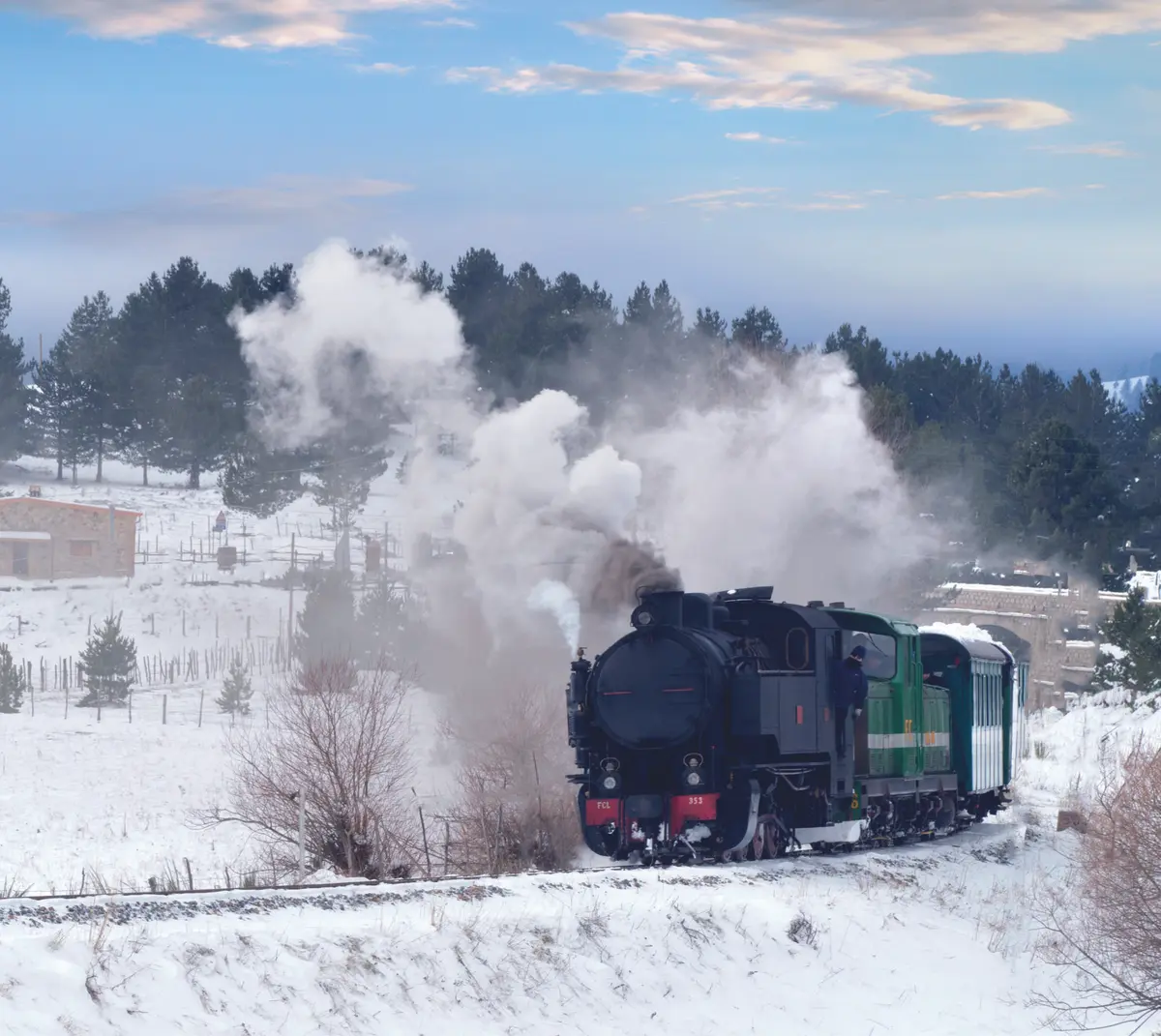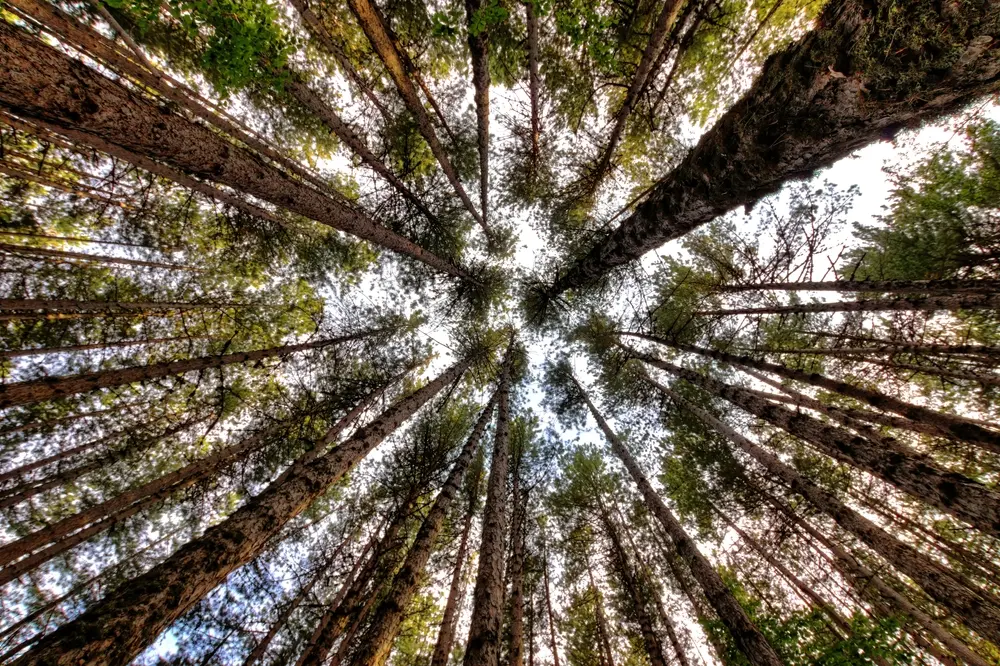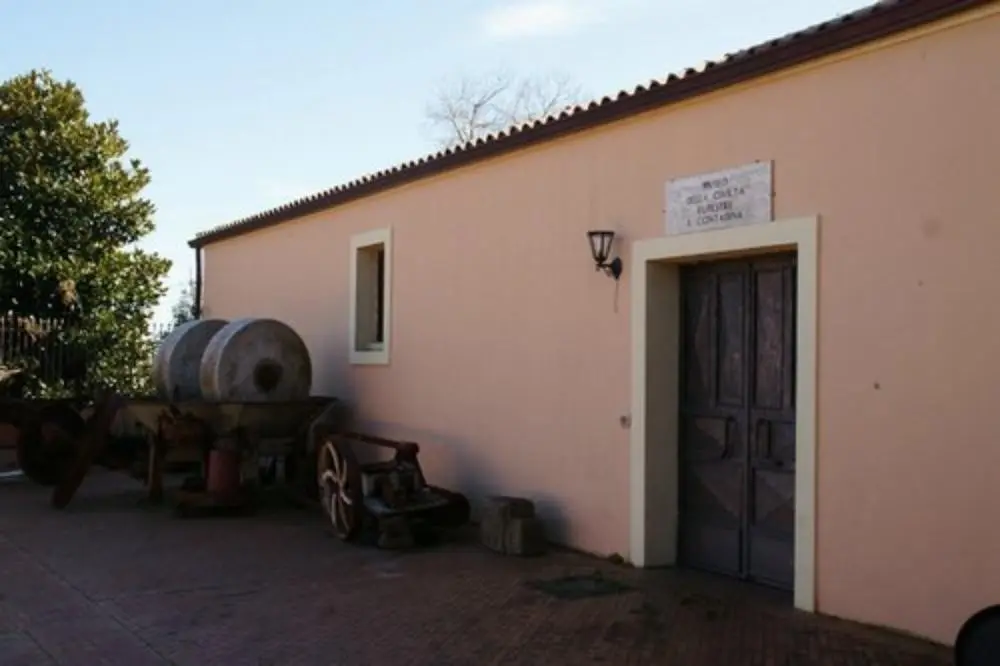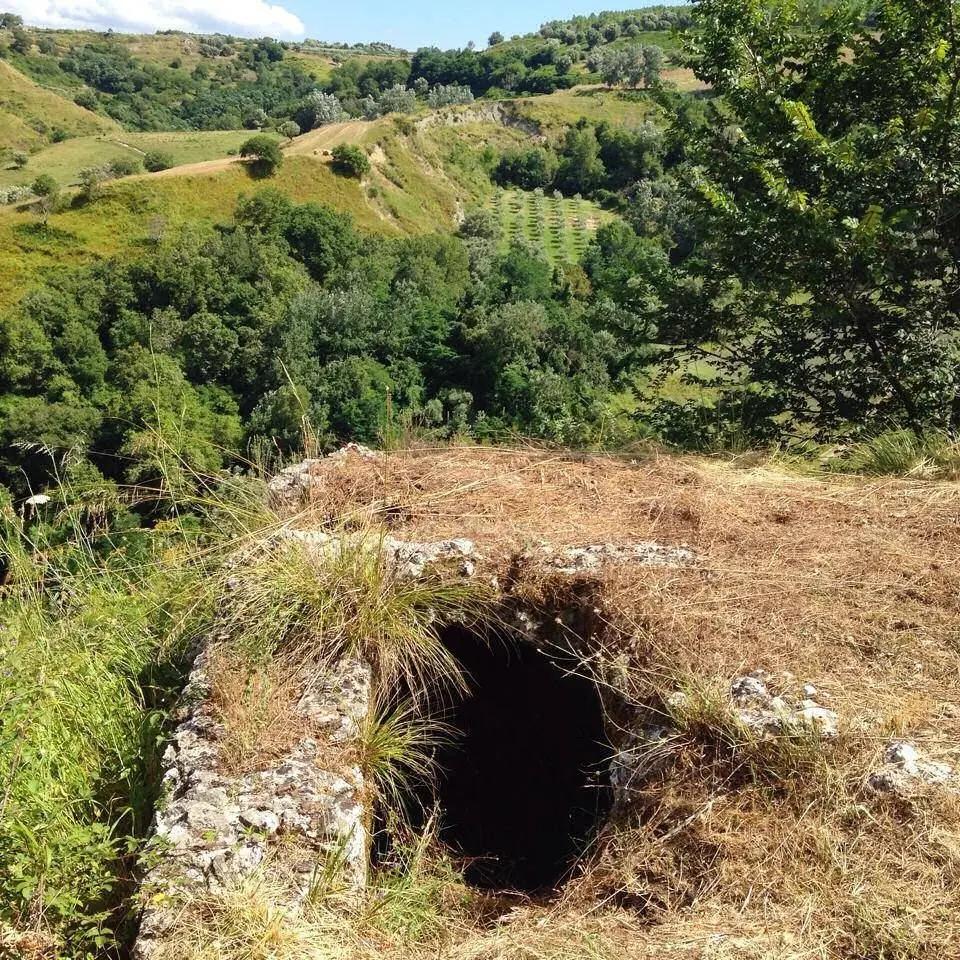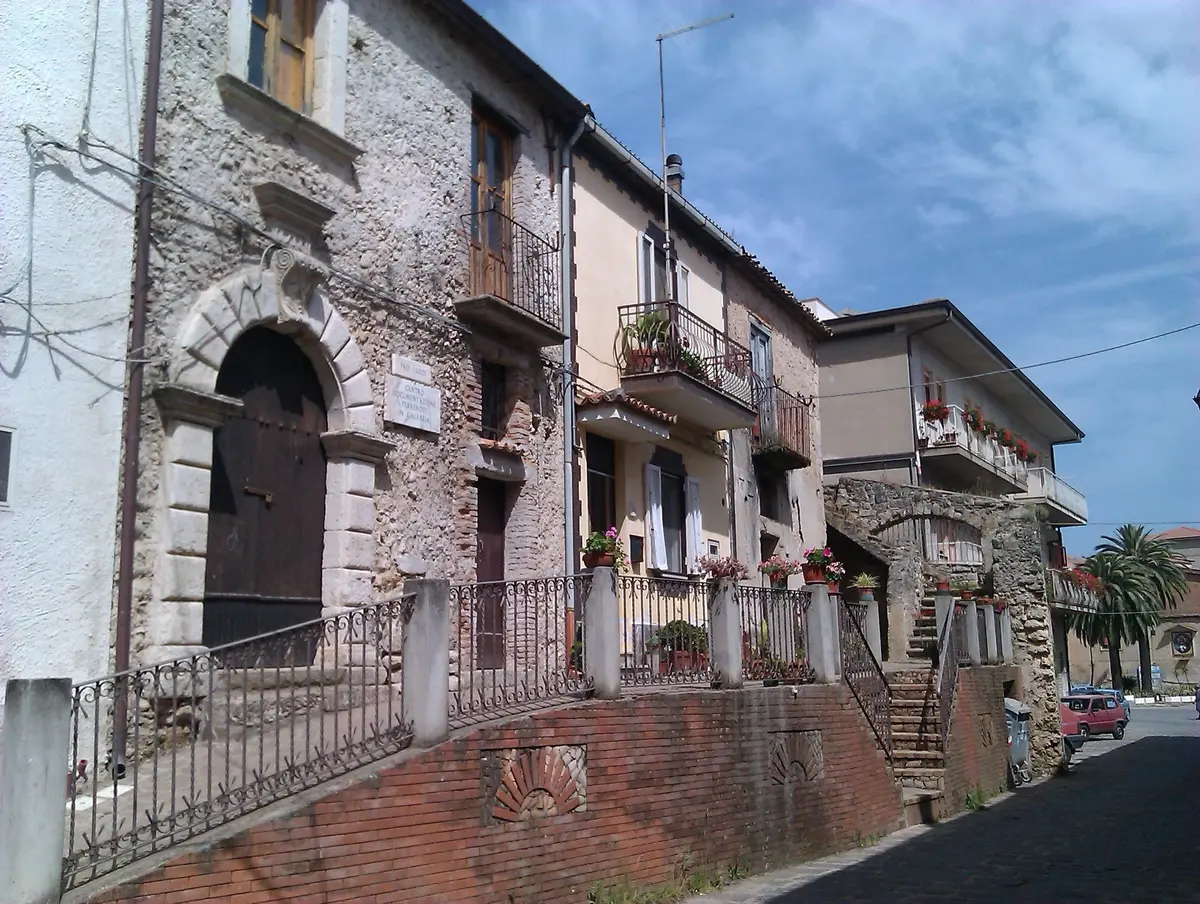Discovering the ghost village of Papaglionti
The land of garlic and the Trisulina Cave

Living slow
Papaglionti, Zungri - Stefania Platì
The small "ghost town" of Papaglionti (or Papaglionti Vecchia) is located in the province of Vibo Valentia and is an abandoned hamlet in the municipality of Zungri, a town already known for the evocative rock site of the Sbariàti Caves (or Zungri Caves).
Papaglionti is one of many Calabrian towns emptied by the course of history, where attentive and romantic visitors can enjoy a "slow" experience, enveloped in a magical silence.
Let's discover Papaglionti Vecchia and its secret stories together...
Papaglionti Vecchia and the Trisulina Cave
Let's start with the name: Papaglionti derives from Papas Leonitius (Pantaleone), the monk of Greek-Byzantine origin who was among the first inhabitants of the site, around which the late antique urban settlement was built. The first written sources on Papaglionti date back to 1280, while we know for certain that Papaglionti Vecchia was definitively abandoned in 1952, following a terrible flood. From this moment onwards, Papaglionti Nuovo was founded, not far away and at a higher altitude, and the old houses of the original village remain shrouded in silence and brambles, an eternal testimony to a time suspended in time.
Today, the 'ghost village' of Papaglionti is one of the most fascinating places for visitors to Zungri: the houses that still stand, all built with poor materials and stones, reveal small details of the daily life of the community that once lived there; the Church of San Pantaleone, which has collapsed in on itself, preserves glimpses of decorations and sacred furnishings; the noble palace next to it, Palazzo Di Francia, is said to have belonged to the founding priest, Pantaleone. Among the buildings swallowed up by brambles, the shadows of a few shops can be made out.
One of the gems not to be missed in Papaglionti is the mysterious Trisulina Cave. To visit it, you need to reach the top of Papaglionti Vecchia and overcome your fear of entering its dark cave. Inside, a staircase leads to a surprising environment: arches, mosaics on the floor and a series of other archaeological and monumental elements suggest that we are in the underground part of an ancient Roman villa. That's right! A large villa from the Augustan era, carved into the tuff and equipped with an underground nymphaeum. Among Corinthian marble capitals, palmettes and remains of granite columns, the Trisulina Cave was reused in Christian times as the Temple of Santa Rosalia.
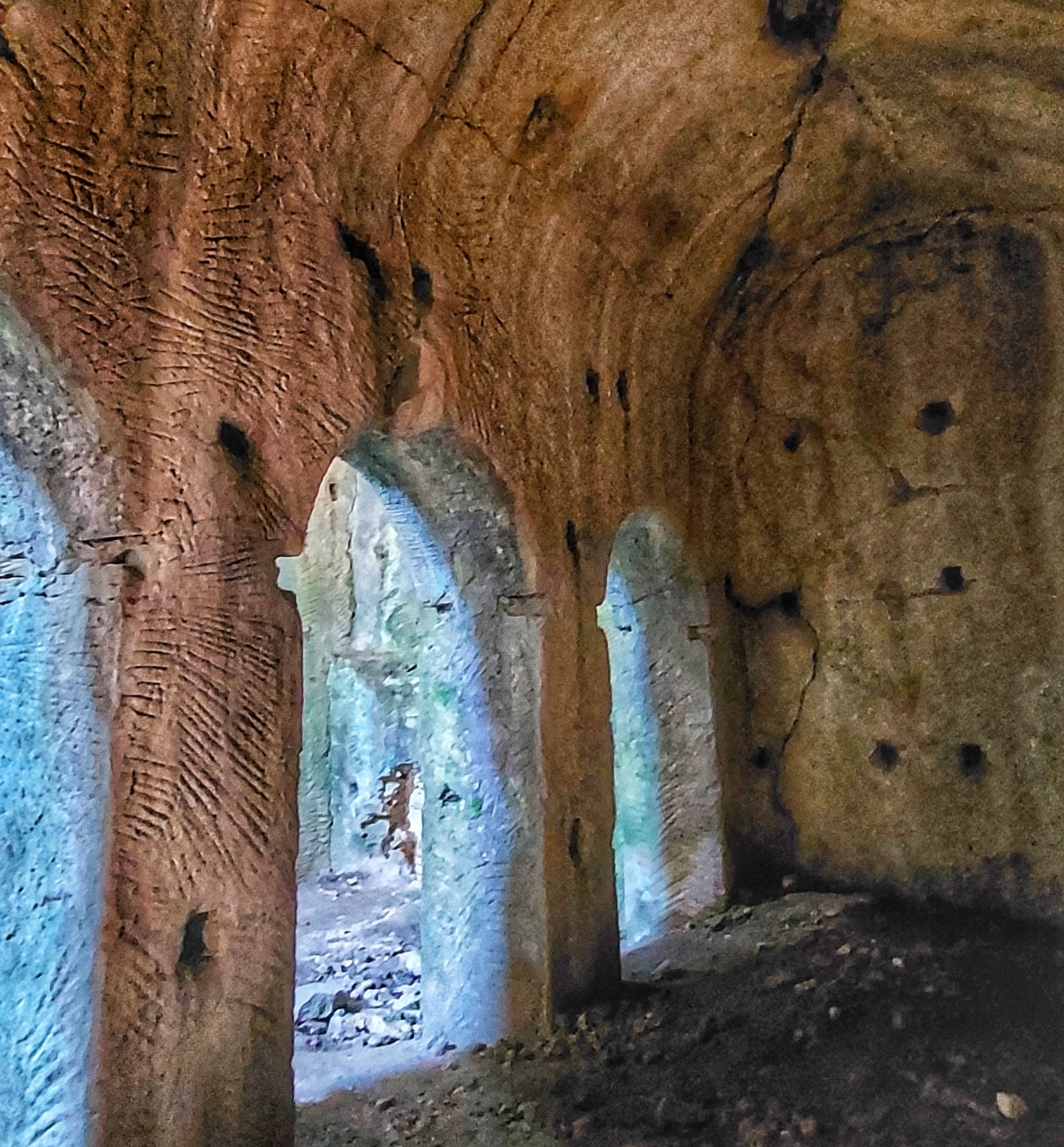
Papaglionti Garlic
The hills surrounding the village of Papaglionti are famous for the production of a delicious local product: Papaglionti Garlic, also known as Calabrian Pink Garlic. This variety of garlic is particularly appreciated for its characteristics: Papaglionti Garlic is immediately recognisable for its intense aroma and delicious flavour. Enclosed in red membranes, it is planted in autumn and harvested in spring, after a wonderful flowering that colours the fields around Papaglionti Vecchia purple.
The temperate and dry climate of this area allows garlic to be produced at the peak of its organoleptic properties. After harvesting, it is left to dry, then hung in characteristic braids and stored in a cool, ventilated place. In the kitchen, Papaglionti Garlic releases all its essence both raw and cooked; it can also be used to flavour typical Calabrian pickles and preserves, which always include garlic and hot chilli pepper.
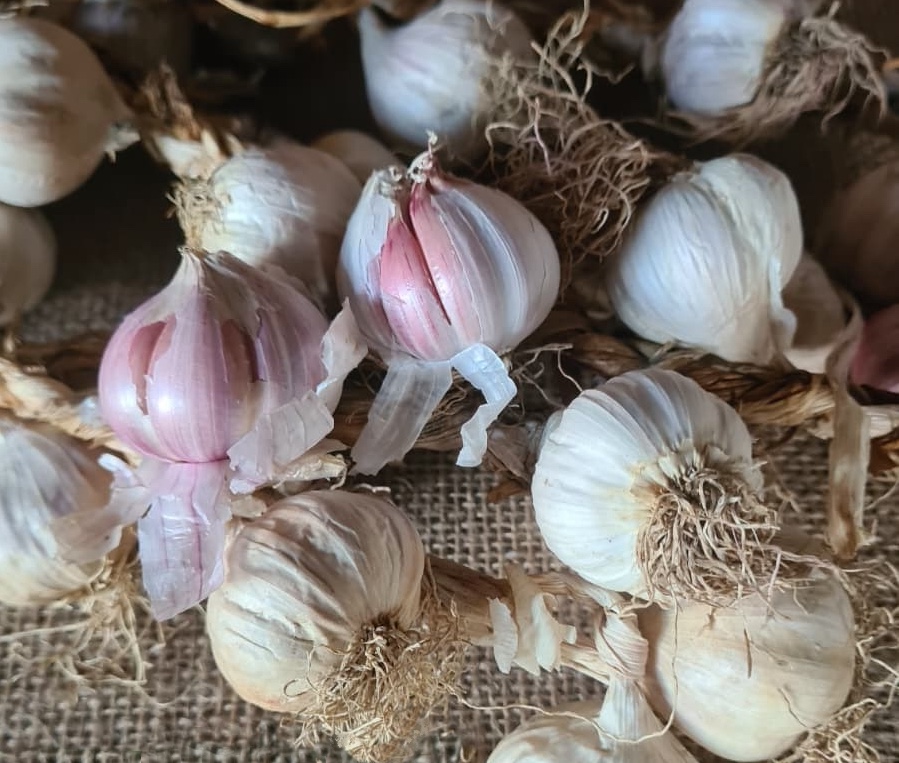
https://calabriastraordinaria.it/en/news/discovering-the-ghost-village-of-papaglionti

